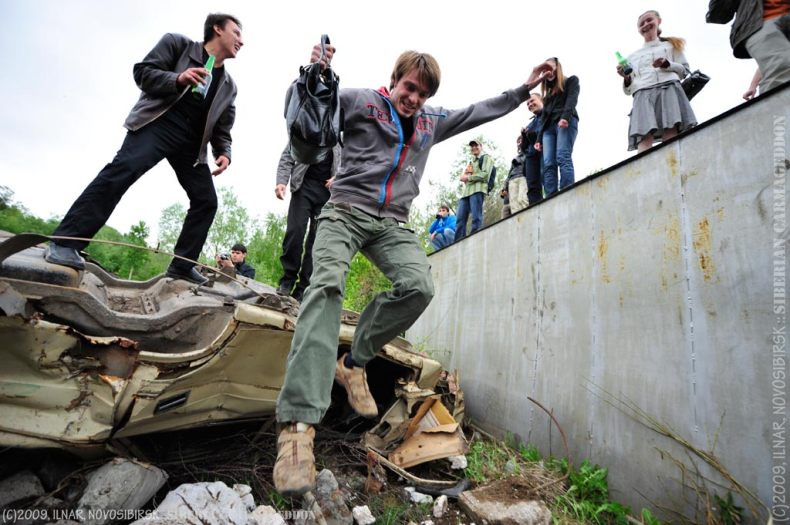|
|
Siberian Carmageddon, Academgorodok, Russia
|
• Music and dance
Music in 19th century Russia was defined by the tension between classical composer Mikhail Glinka along with his followers, who embraced Russian national identity and added religious and folk elements to their compositions, and the Russian Musical Society led by composers Anton and Nikolay Rubinsteins, which was musically conservative. The later tradition of Pyotr Ilyich Tchaikovsky, one of the greatest composers of the Romantic era, was continued into the 20th century by Sergei Rachmaninoff. World-renown composers of the 20th century included also Alexander Scriabin, Igor Stravinsky, Sergei Prokofiev, Dmitri Shostakovich and Alfred Schnittke.
Russian conservatories have turned out generations of famous soloists. Among the best known are violinists David Oistrakh and Gidon Kremer; cellist Mstislav Rostropovich; pianists Vladimir Horowitz, Sviatoslav Richter, and Emil Gilels; and vocalists Fyodor Shalyapin, Galina Vishnevskaya, Anna Netrebko and Dmitry Hvorostovsky.
During the early 20th century, Russian ballet dancers Anna Pavlova and Vaslav Nijinsky rose to fame, and impresario Sergei Diaghilev and his Ballets Russes' travels abroad profoundly influenced the development of dance worldwide. Soviet ballet preserved the perfected 19th century traditions, and the Soviet Union's choreography schools produced many internationally famous stars, including Maya Plisetskaya, Rudolf Nureyev, and Mikhail Baryshnikov. The Bolshoi Ballet in Moscow and the Mariinsky Ballet in St Petersburg remain famous throughout the world.
|
|









